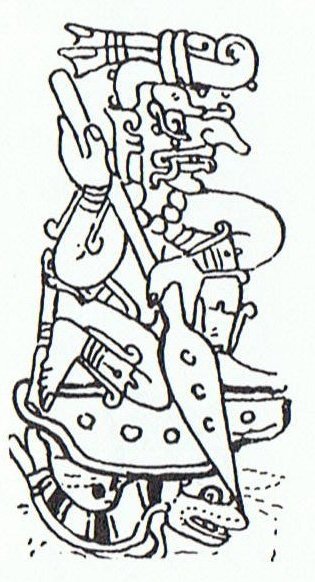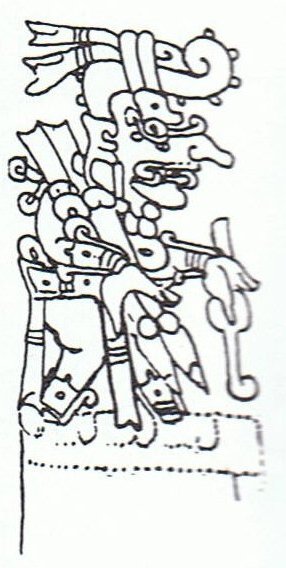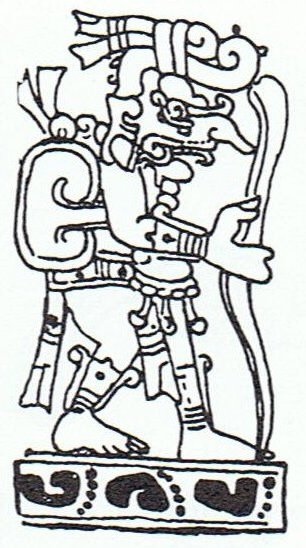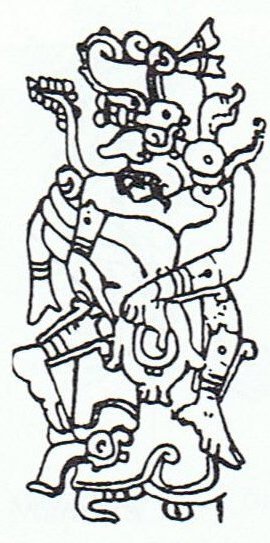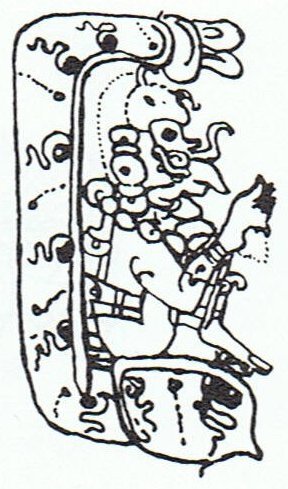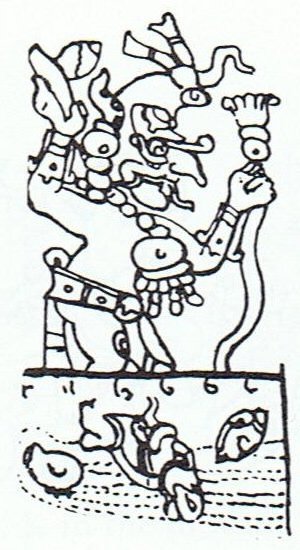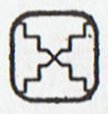4. 542 days in the Mayan system is 1.9.2, strangely like number 192 (which occurs in the rongorongo texts). After 542 (possibly to be read as 5 * 42 = 210 = 192 + 18) days Hun-Nal-Ye 'entered or became the sky'. Great powers do not merely 'enter' through a doorway, they immediately will dominate (take possession of) the new room. A man of power entered the room and everybody stopped talking to watch him. Not out of curiosity, but by deference. Not by cause of his rank or reputation, but by cause of his personality. The room grew lighter when he entered, attention was called for. He had mana. Therefore Hun-Nal-Ye became the sky when he entered the sky and the date was February 5, 3112 B.C. Different levels of the cosmic order are inhabited at different times by the Sun (alias the Rain God, cfr at henua and at maitaki). It is to be noted that he has different kinds of 'sticks' in different seasons:
'Water', 'air', respectively 'land', is followed by a climb in the cosmic tree, and its (the head at the bottom) reversed orientation probably means the year is ending. Next sequence shows how the Rain God has his 'sticks' held high instead of in a low position:
The symmetry includes 'alighting' in the cosmic tree in the 4th position. 4 + 4 = 8 are the number of stations. But there is no reversed orientation in this station, which presumably indicates that the journey continues. If so, then the beginning should be with the station which I have in position 5 above, the exceptional station where the Rain God is sitting hidden inside the earth. It is probably no coincidence that he carries no 'stick' in this station. The journey of the Rain God (Sun) has 8 stations and seems to begin where he cannot be seen. In the beginning there is no light and we are in the station of the blind Orion (Te Pei), where the Rain God is 'in the sack', i.e. Sky and Earth are lying in close embrace: ... the Palenque scribes repeated Creation again and described it as 'it was made visible, the image at Lying-down-Sky, the First-Three-Stone-Place' ... If any of the Rain God stations is connected with toki, it should be the one following the dark station, in which we can see him as a true rain god, wading in water with a water lily in his hand. And he is holding high a kind of hewing implement. Possibly we can see the Mayan sign for flint knife (etz'nab), because of the wavy line across:
In this (double) form it is the sign for day 18 in the Mayan calendar. The single wavy line in the 'adze' of the Rain God can allude to lightning (flint stones are used to generate sparks) and there may be a connection with the kava glyph type:
Presumably the Rain God can be said to 'enter the sky' (and also to 'become the sky') when he emerges from the embrace of Mother Earth. Is the kava sign on its way to stretch itself in order to become a henua sign, and then like an umbrella extend itself to become a 'roof'? It cannot become a parasol because night comes before daylight. |
